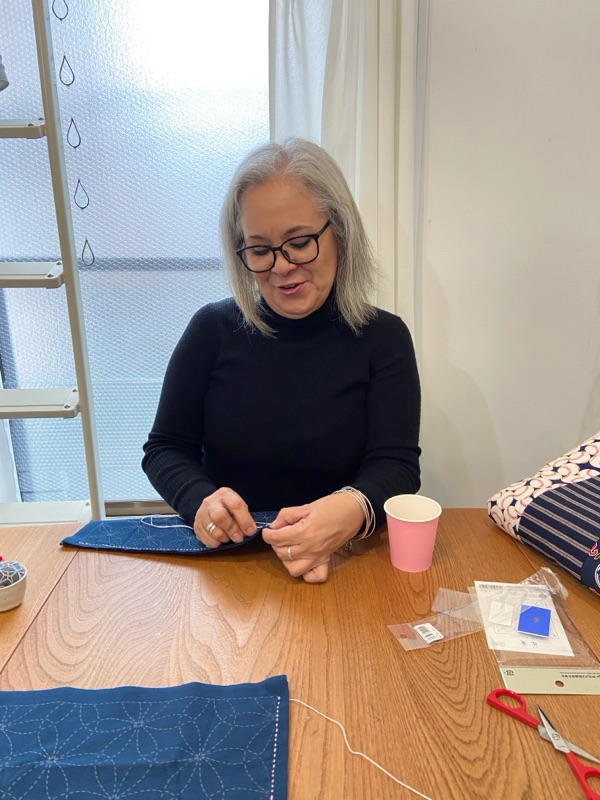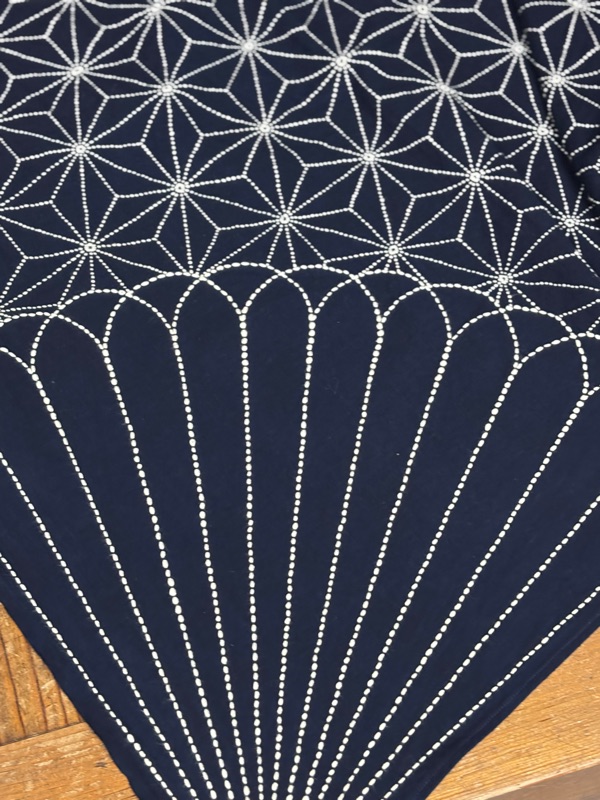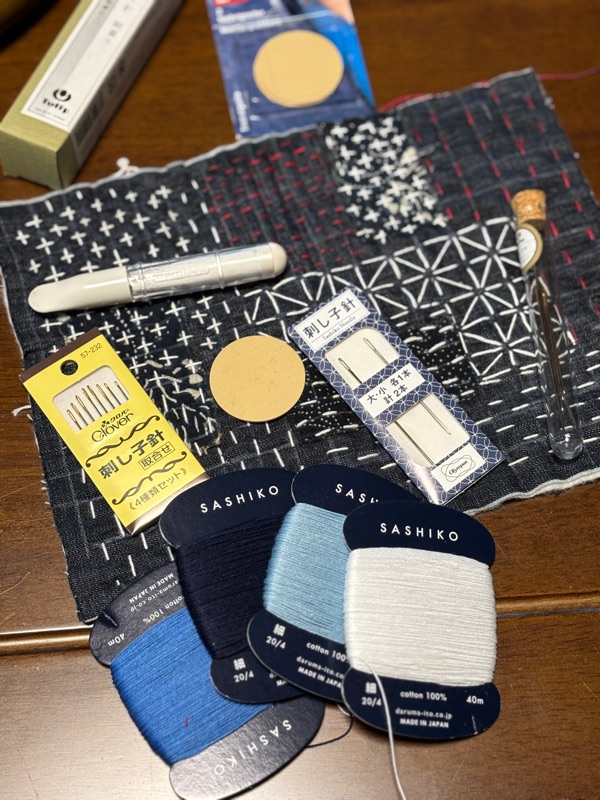
Sashiko: The Japanese Art of Slow Stitching
Since moving to Japan, I’ve discovered so many wonderful traditions, foods, and customs, but my favorite of them all has been the discovery of sashiko. I’m not quite sure how I stumbled upon this beautiful art form, but the more I have learned about it, the deeper my appreciation has grown. There’s something captivating about the rhythm of the tiny stitches, the meditative process of sewing, and the stunning indigo fabrics that have now become a part of my collection. It’s more than just stitching—it’s a practice, a way of slowing down, and an invitation to embrace the mindfulness of mending/creating.
What is Sashiko?
At its core, sashiko is a traditional Japanese form of hand-sewing that involves stitching simple, repetitive patterns on fabric. The word “sashiko” translates roughly to “little stabs” (刺し子), a perfect description of the delicate, precise movements used in the craft. Sashiko originally emerged out of the necessity of mending and reinforcing fabric, but over time it evolved into a beautiful decorative art form.
A Brief History of Sashiko
The history of sashiko goes back several centuries to rural Japan. The technique was originally used by peasants and farmers to repair worn-out clothes and make them more durable, especially in the colder months. In Japan's past, fabric was often expensive and hard to come by, so instead of discarding torn or worn garments, people would stitch them up with intricate patterns to reinforce the material. These patterns not only made the clothing functional but also aesthetically pleasing.
Sashiko was historically seen as a form of frugality and practicality. In a way, the art of mending became a symbol of the Japanese mindset of mindfulness and sustainability, reflecting a culture that values reusing, repairing, and making the most of what you have.
The Stitches: Simple Yet Beautiful
The beauty of sashiko lies in its simplicity. At first glance, it might seem like a collection of tiny stitches, but when you look closer, you realize that every stitch has a purpose. The stitching patterns are typically geometric and repeated, creating a stunning rhythm and flow across the fabric. Some of the most famous sashiko patterns include the "Asanoha" (hemp leaf), "Kikkō" (turtle shell), and "Seigaiha" (waves), each with its own symbolism and meaning.

One of the most fascinating aspects of sashiko is its versatility. Although it started as a method of mending, it has since evolved into a form of self-expression. Modern sashiko is used for creating clothing, accessories, home décor, and even wall art, where the patterns can be adjusted to reflect the creator’s personality or mood.
The Slow Stitching Process: A Meditative Practice
For me, what’s truly special about sashiko is the mindfulness it creates. Every time I pick up my needle and thread, it’s a moment of quiet reflection. The repetitive motion of the stitching has a meditative quality. I find that my mind slows down, and I can fully immerse myself in the present moment, letting go of distractions and worries.
The beauty of slow stitching lies in the process itself. Each stitch is like a tiny, deliberate breath, a pause in the hustle and bustle of life. When I get lost in my stitching, time seems to stand still. The world around me fades away, and all that matters is the fabric, the thread, and the pattern slowly coming together.
Sashiko Today: A Journey of Renewal
Sashiko, is a great metaphor for today’s quest for sustainability and mindfulness. In a world of fast fashion and disposable culture, the practice of mending clothes instead of throwing them away feels like a small but powerful act of resistance. It’s a way to reconnect with something slower, more deliberate, and more intentional. Since moving to Japan I have also been intrigued with recycling jeans, mostly vintage Levis but also Japanese jean which originated in a town close to where I live (Kojima/Kurashiki).
The Japanese art of sashiko has also gained popularity worldwide in recent years. People are discovering its therapeutic qualities, and many are using it as a way to reconnect with their creativity and practice mindfulness. Whether it’s repairing a favorite pair of jeans, creating a new jacket, or simply adding a few stitches to a worn pillowcase, sashiko encourages us to slow down and reflect on our relationship with our belongings.
The Future of Sashiko: Preserving Tradition in a Modern World
While sashiko may have started as a method of mending, today it’s a celebration of craftsmanship and creativity. It continues to thrive in Japan and beyond, adapting to contemporary tastes while still honoring its traditional roots. Whether practiced by artisans or beginners, sashiko is a reminder that there is beauty in simplicity, peace in patience, and meaning in every stitch.
If you’re interested in learning sashiko, I highly encourage you to give it a try. You don’t need to be a skilled seamstress to get started—just a needle, some thread, and a piece of fabric. As you stitch, you might find yourself embracing the same calm and focus that has been passed down through generations.

For me, it’s not just about the end result—it’s about the journey. And with every stitch, I’m reminded of how these small acts of creativity and care can bring a sense of fulfillment and peace to our busy lives.
Comments
Post a Comment